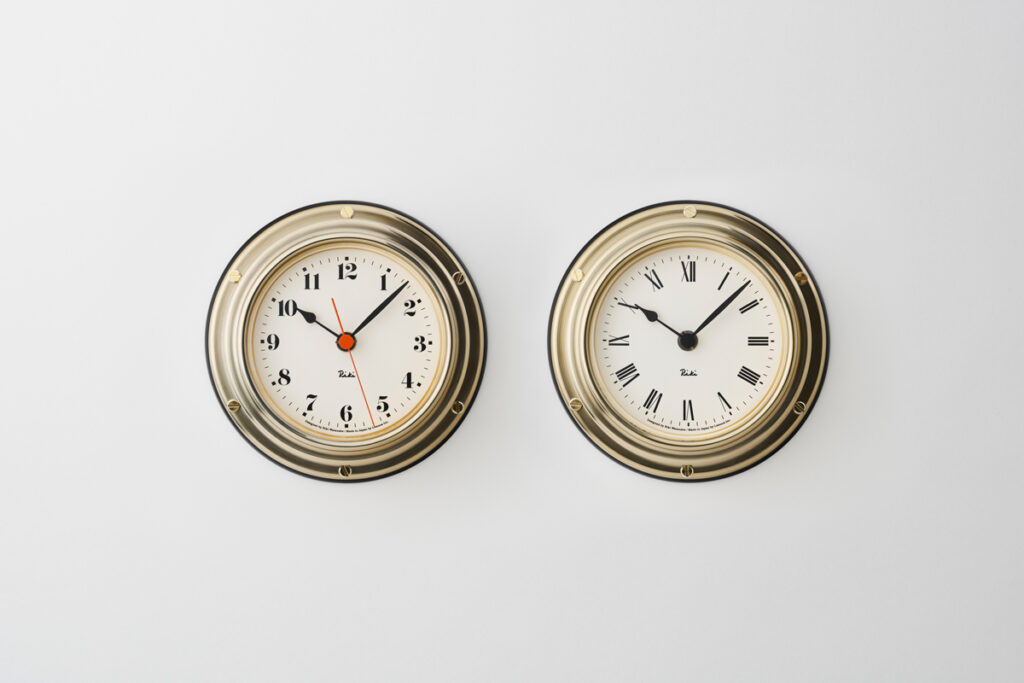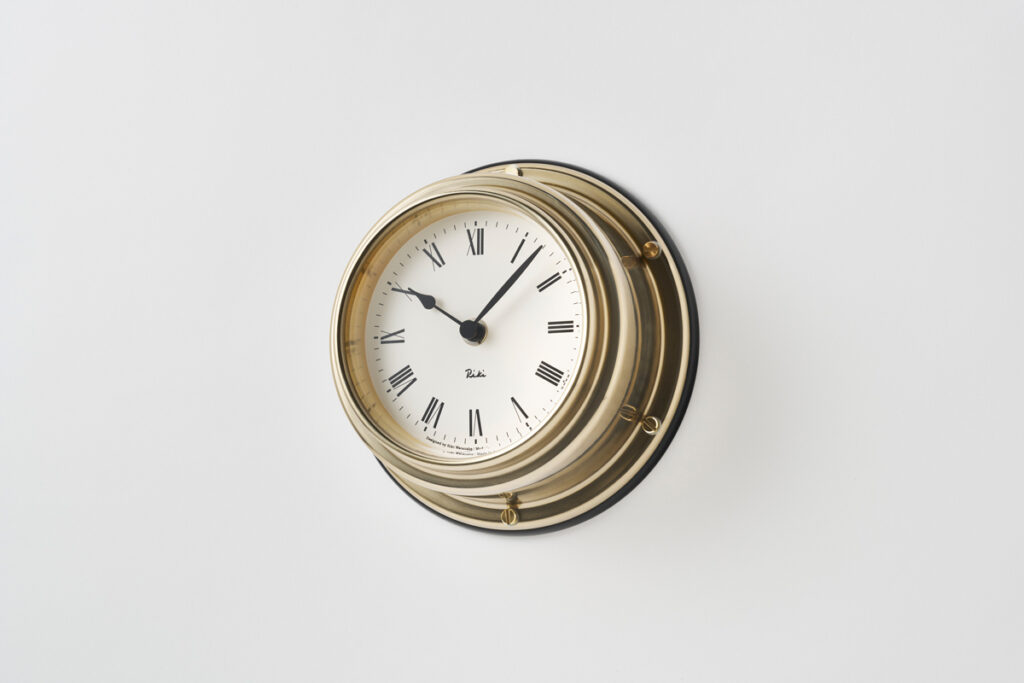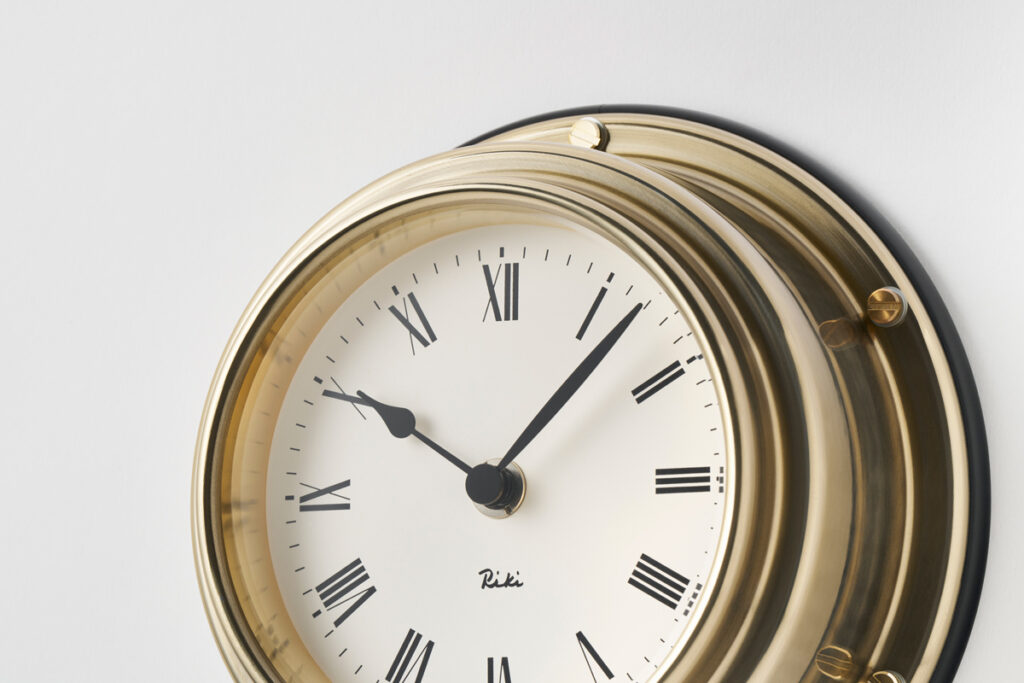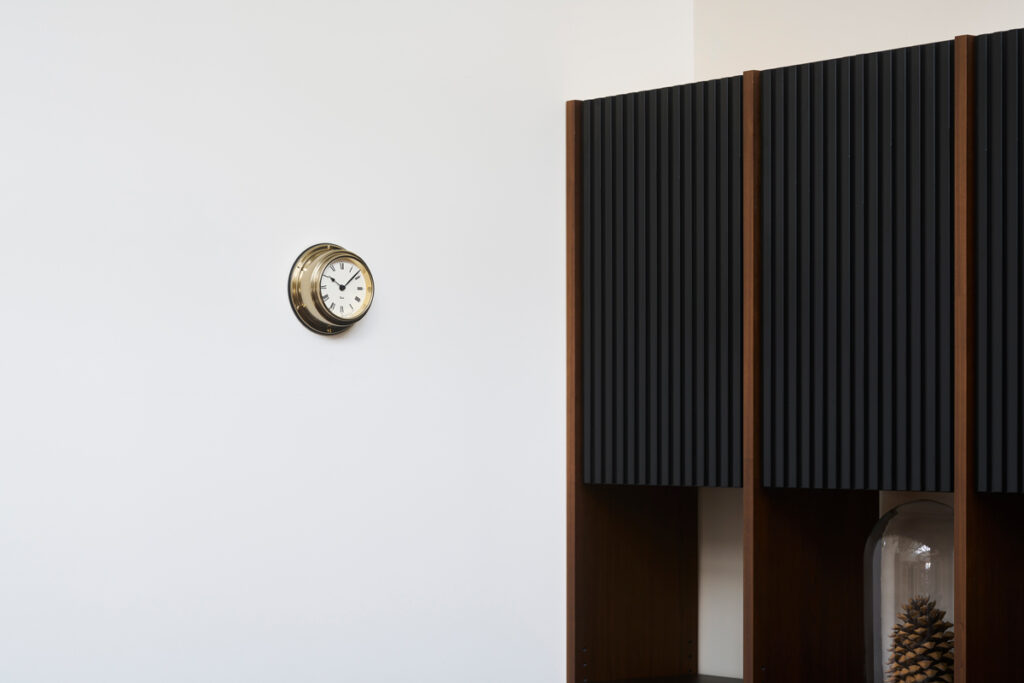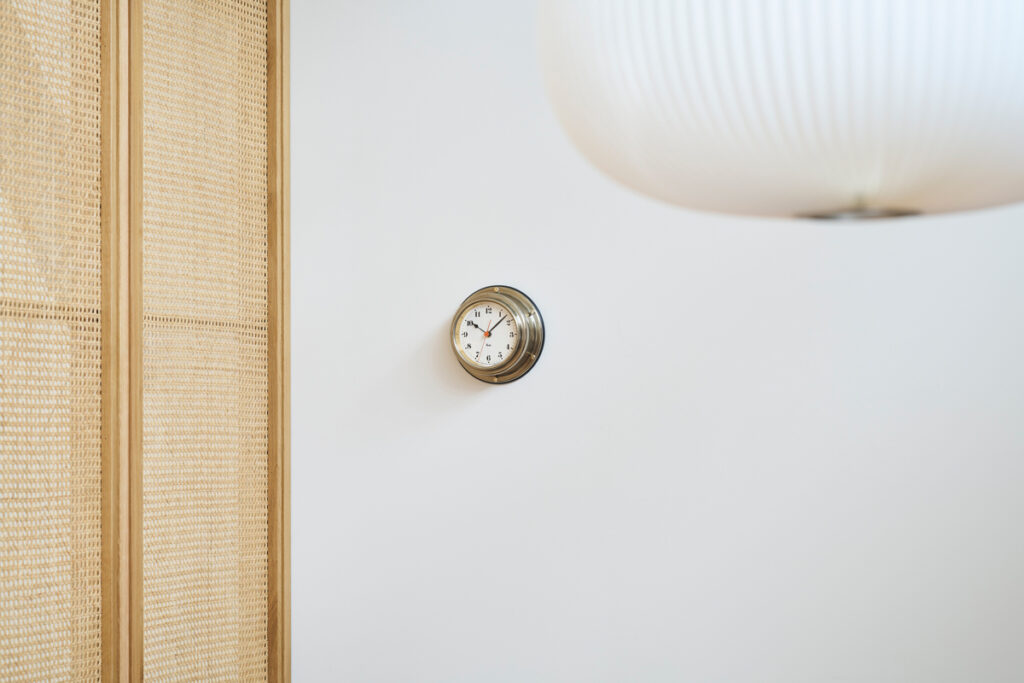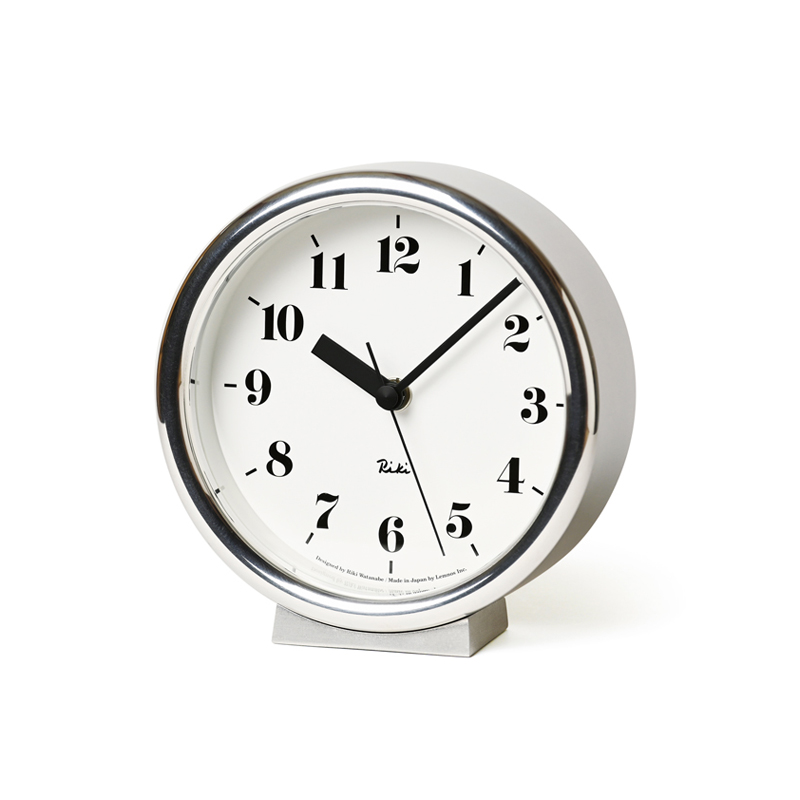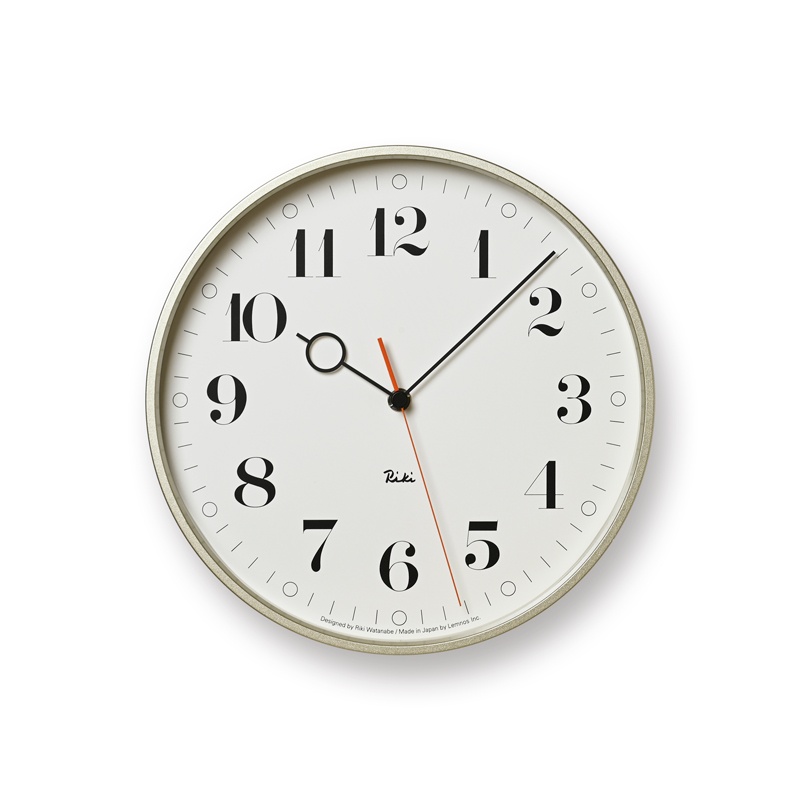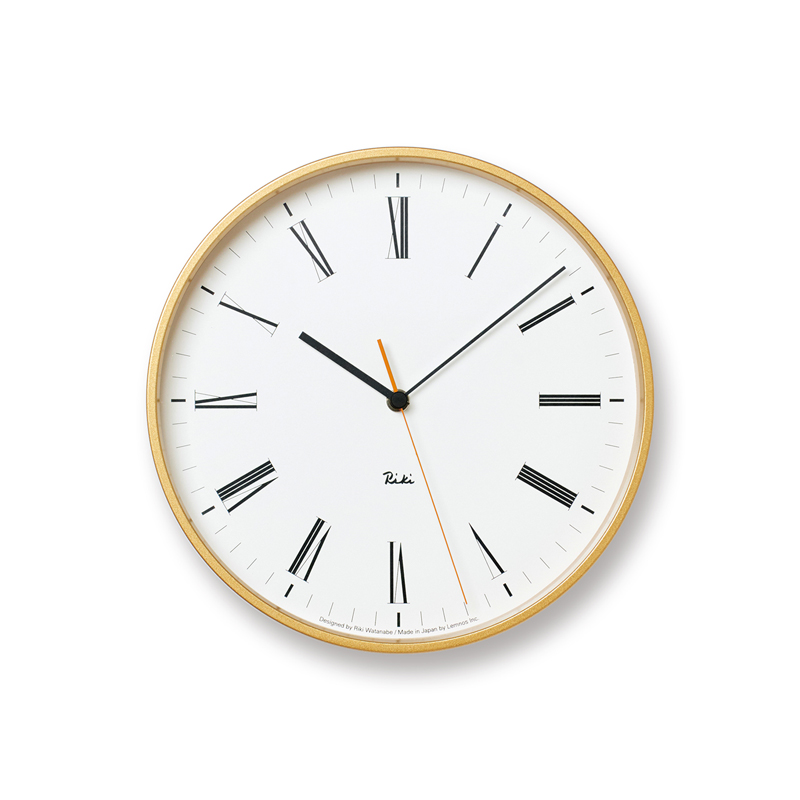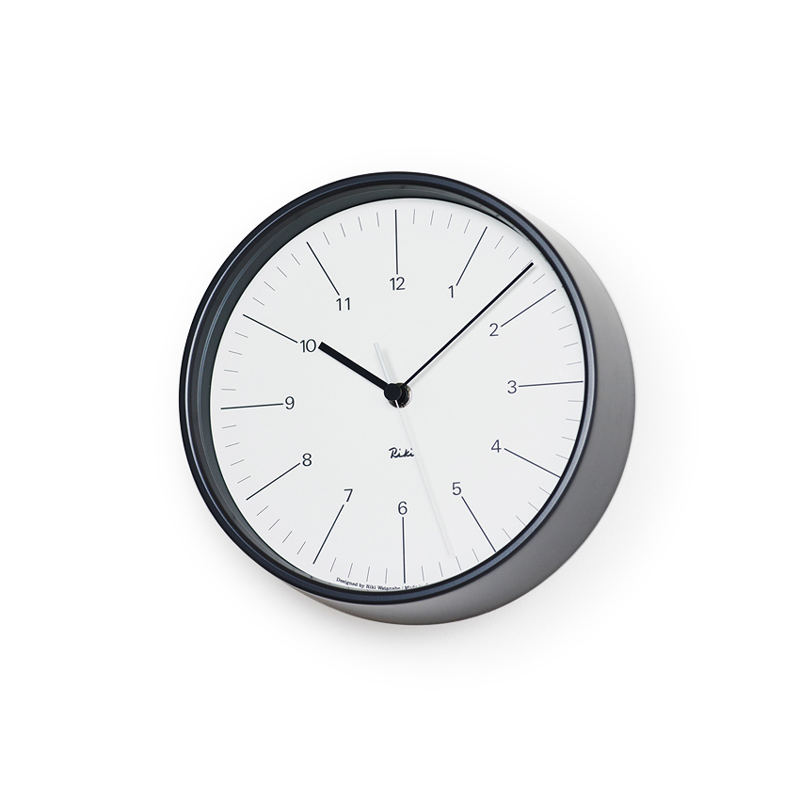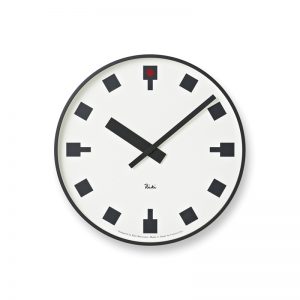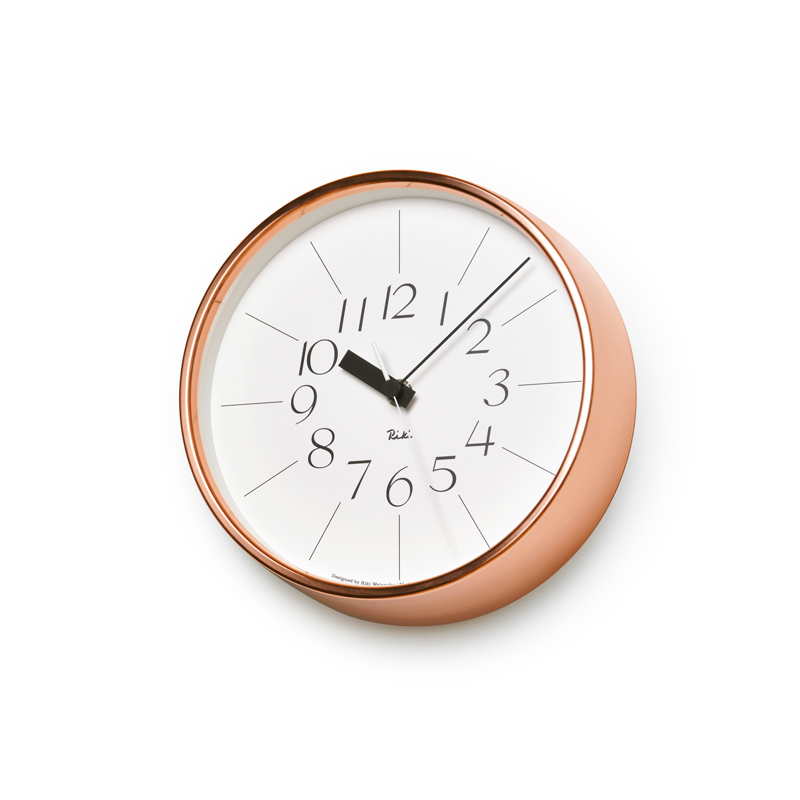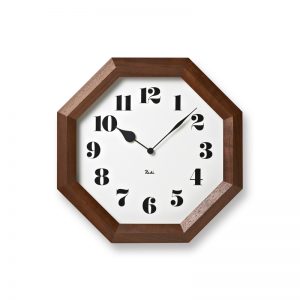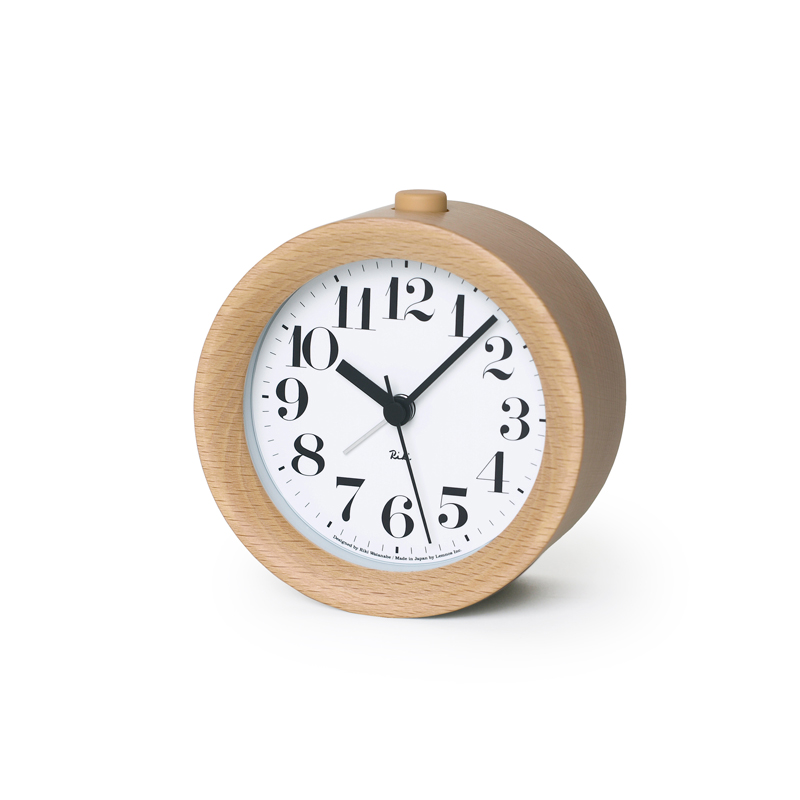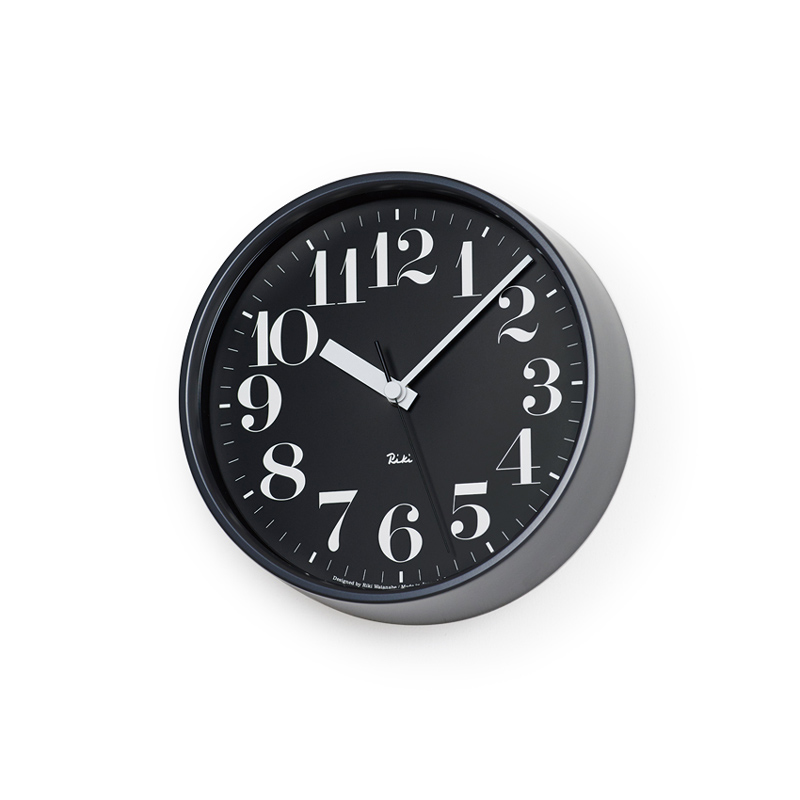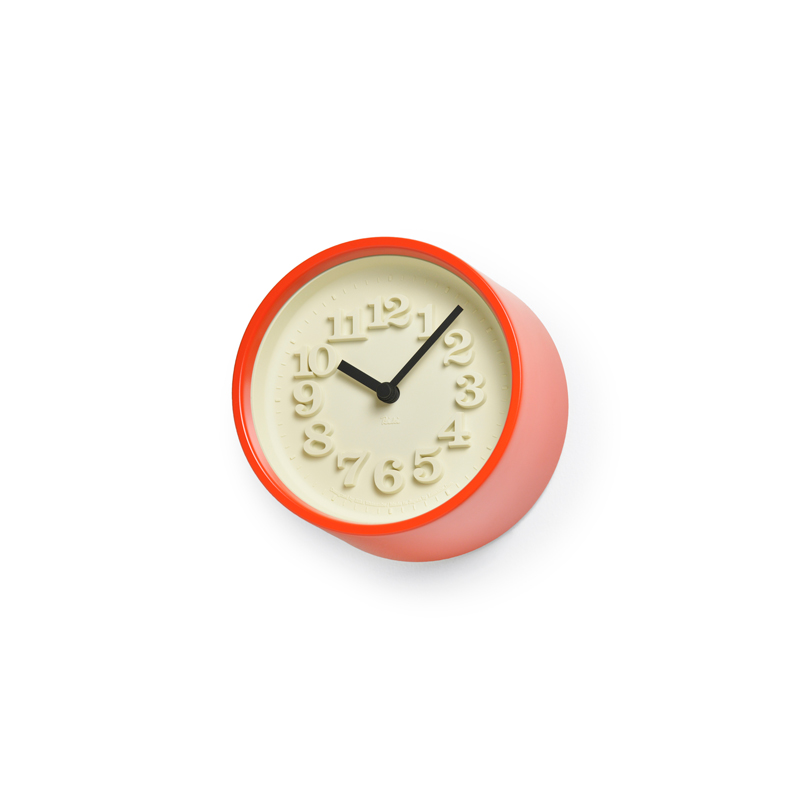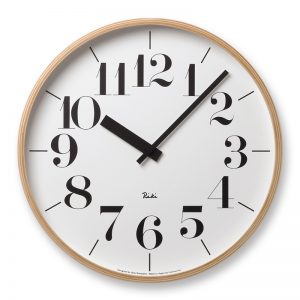RIKI MARINE CLOCK
design : Riki Watanabe
A dignified appearance. This clock exudes a presence that quietly resonates with Riki Watanabe’s admiration for the sea. Watanabe’s fondness for distinctive nautical marine clocks led him to collect several of them. In 1979, he translated his interpretation of the genre into a design for an interior clock.
The frame, forged from stainless steel, features a stepped finish that gives off a subtle glow. Carefully crafted details include the aluminum machined inside, original brass decorative screws, and beveled acrylic winds, creating a classical image with a modern twist. With a particular focus on the Didoni typeface Arabic numerals, we conducted multiple experiments to evaluate their compatibility and balance with the frame shape and materials. The journey to achieve this refined state was time-intensive. Choose from a version featuring Arabic numerals with a second hand, reminiscent of a marine clock, or a more subdued version with Roman numerals without a second hand.
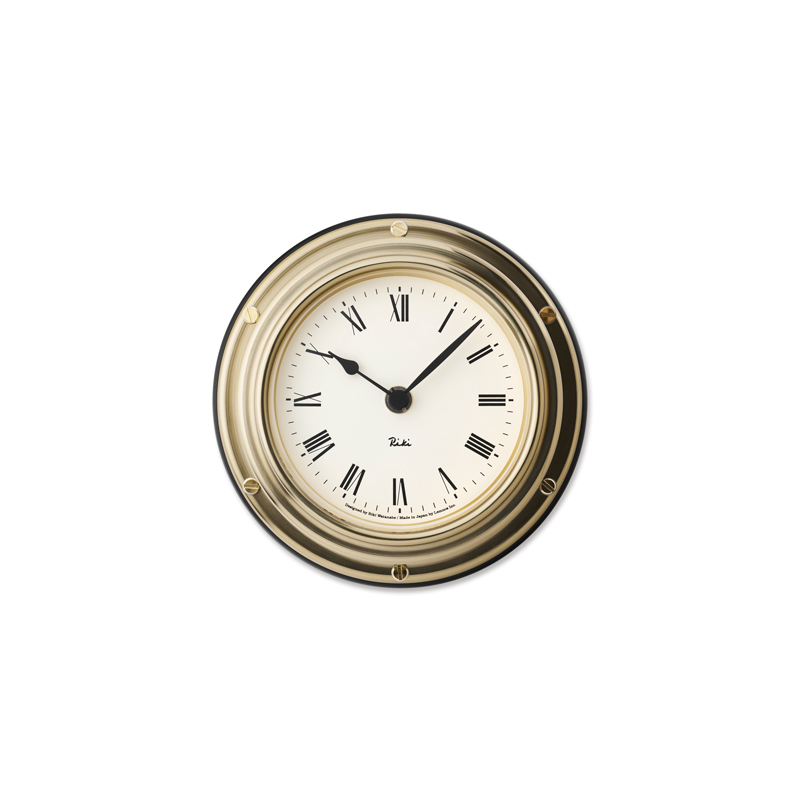

WR24-01
Roman
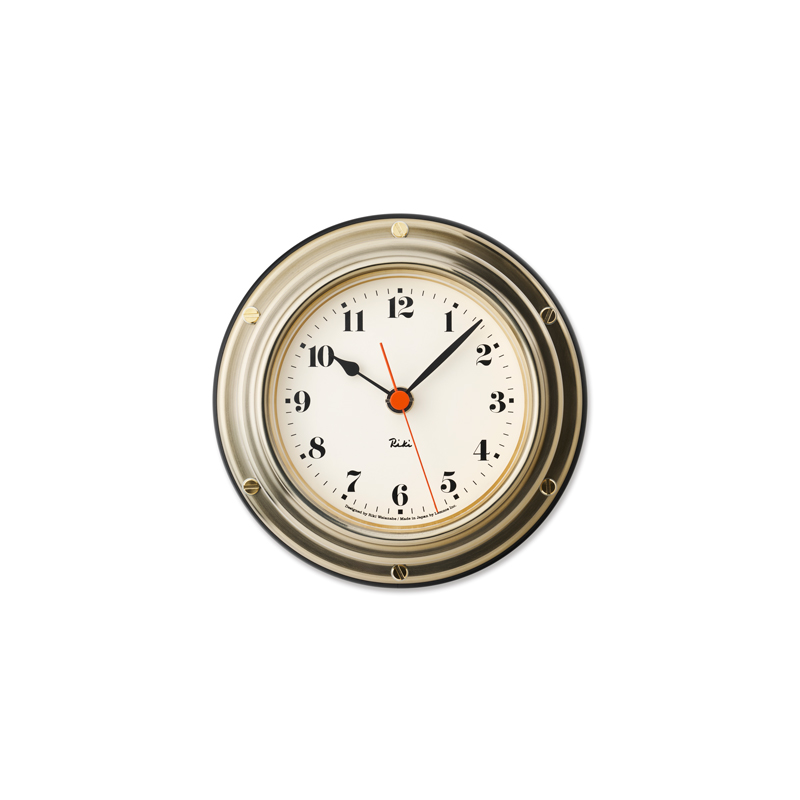
WR24-02
Arabic
WR24-01
- Size
- φ169 × d69mm
- Weight
- 610g
- Material
- Stainless Steel, Acrylic, brass
WR24-02
- Size
- φ169 × d69mm
- Weight
- 610g
- Material
- Stainless Steel, Acrylic, brass
- Specification
- Sweep Second
Photo by Ryoukan Abe
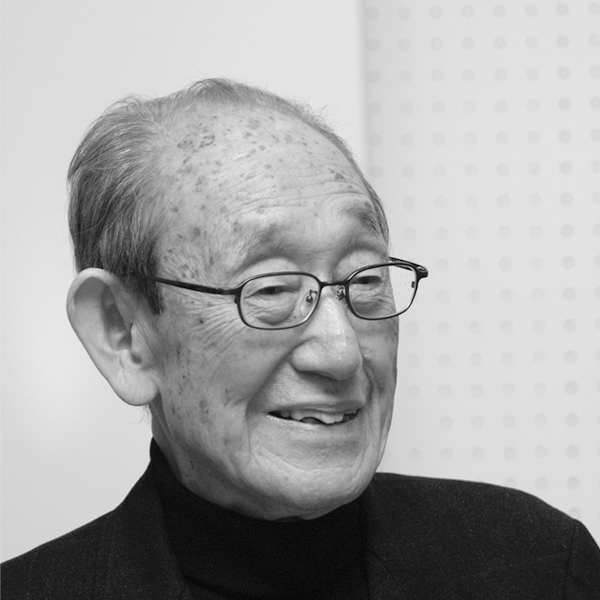
Riki Watanabe
(1911–2013) Graduated from the Woodwork Department of Tokyo High Polytechnic School. After working as an assistant professor at Tokyo High Polytechnic School and as an assistant in the Forestry Department at Tokyo Imperial University (the existing Tokyo University), he established Japan’s first design office, the RIKI WATANABE Design Office, in 1949. His main focus was the establishment of the Interior Architect Department at Tokyo Molding University, Craft Center Japan, Japan Industrial Designer Association and Japan Designers Committee. He designed the interior decor at the Keio Plaza Hotel, Prince Hotel, etc. and furniture such as the “Himo-Isu (Rope chair)” and “Trii-stool”. Moreover, from wall clocks and watches to a public clock called “Hibiya pole clock” at Dai-ichi Life Holdings in Hibiya district, his work on clocks and watches became his lifework. He received the Milano Triennale Gold Medal in 1957, the Mainichi Industrial Design Prize, Shiju hosho(the Medal of Honor with Purple Ribbon), and many other awards/recognitions. In 2006, the “Riki Watanabe – Innovation of Living Design” exhibition was held at the National Museum of Modern Art.

